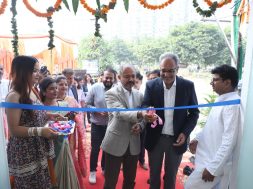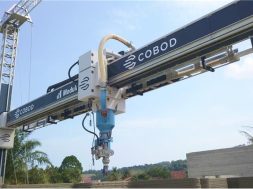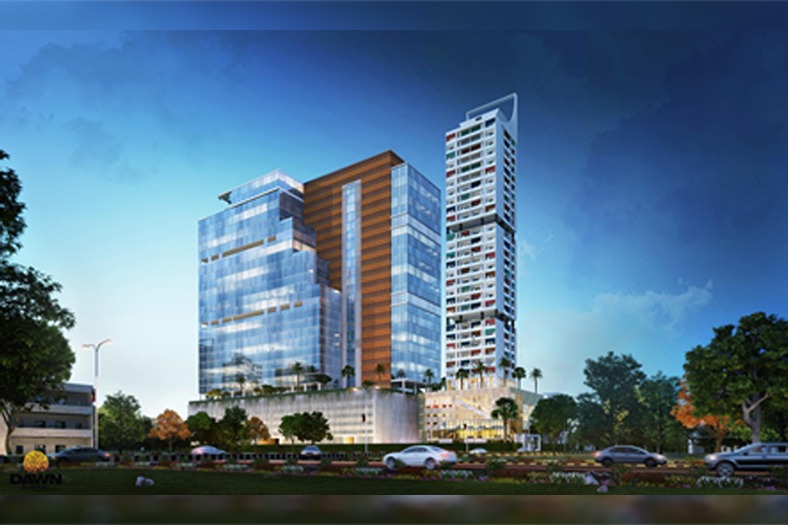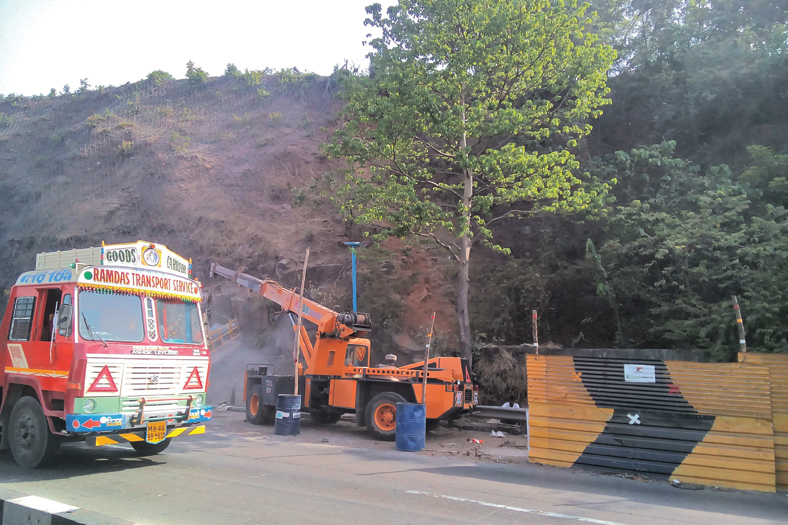Building with precast
Precast technology is gearing up with its versatility. This article highlights on the role of precast in high-rise construction.
The fast paced urbanisation in India has led to a huge demand for housing and to the growth of the real estate sector in the country. According to 2011 census report, the number of urban agglomeration in country increased from 384 in 2001 to 475, within a decade.
Explaining on how precast played an essential role in addressing the problems faced during the high-rise construction, Arunendu Ta, Head of Research and Development and Product Development of CHRYSO India, briefs, “The unprecedented demand in housing sector has pressurized the developers to look at alternative construction options, to ensure competitive cost and timeliness. The need of the hour was to address shortcomings such as low productivity, unskilled labour, cost and time overruns, prevalent in the traditional construction mode. Precast concrete addresses many of these shortcomings and hence offers a more sustainable method of construction suited to modern building requirements.”
High-rise buildings have special requirement with respect to structural system, execution demands, material movement and construction on high levels, wind and seismic load resisting system etc. Precast concrete technology plays very vital role in high-rise building construction. Prakash Shah, Head, Technical Support, Elematic India Pvt. Ltd., highlights how precast technology can be used for structural purpose, he states, “Precast technology can be implemented for structural as well architectural requirements. For structural use, precast elements like normal reinforced columns, prestressed or normal reinforced beams, hollow-core slab, shear walls etc. can very well be implemented for structural system of high-rise buildings. Besides complete precast system, for high seismic regions, we recommend composite structures, where the shearwalls can be cast-in-situ structure in combination of precast column, prestressed beams and hollow-core slabs. This gives excellent structural system for high-rise building considering ease of execution and simplistic execution details.”
Agreeing upon Mr Shah’s view on precast a best solution for structural requirement, Siddharth Sharma, Vice President, Magicrete Building Solutions Pvt. Ltd., says, “Concrete, for past several years, has played a key role in the expansion of urban centres and definitely, the demand and supply gap of high-rise building construction can be catered by precast concrete that can be erected in days rather than a year. Precast concrete structures, which are composed of concrete members that are reinforced, are without doubt the best known form of structural system.”
Spancrete’s precast hollow core and related structural products have been utilised in mid to high rise buildings worldwide for many decades. Markets like the USA, Japan, China, Mexico and other locations have utilised precast components to speed the construction process for multi-level buildings. With his expertise, Terence W. Dittrich, Global Sales Director, Spancrete, notes that precast allows efficient installation which is time saving. On this note, he says, “Precast concrete components can be delivered to the project site “just in time” which allows for a more efficient installation schedule, improved maintenance of the delivery and erection schedule and reduction of onsite confusion with equipment, manpower and materials. With adequate crane capacity, builders can increase the speed of completion while maintaining quality control due to the precast components being manufactured off site in a controlled factory environment.”
Spancrete’s precast competes very well against traditional RCC cast-in-situ construction where shoring and scaffolding is required and typical curing of concrete on-side takes significantly longer. Spancrete precast products also insure accurate tolerances of the final product, reducing levelling and post installation finishing to a minimum.
Apart for utilising precast for structuring, it can be significantly utilised for architectural aspect, external finished precast facade elements are the best suited solution. There is no limitation of exterior finish to precast facade. To name a few exterior finish, colour concrete, textured surface, exposed aggregate, brick imitation or even graphic concrete, are easily possible with precast facade. Further, internal partition walls and stair flights can very well be precast elements, which would greatly help to ease the execution and achieve high quality of construction. Other than these, hollow-core slabs can be implemented as composite system with any other conventional structural system like CIS column-beam frame or structural steel, PEB system. With hollow-core slab, one can easily attain long spans of 8-10 metre and achieve a reduction in the structural system requirements.
Advantages precastPrecast concrete technology has numerous direct advantages like saving in material, speed of construction, superior quality, less labour oriented work and so on, besides the indirect advantages of flexibility in architectural planning, substantially reduced life cycle cost and maintenance of building, environmentally sustainable construction, very less wastage of potable water for curing of concrete at site etc. The construction to great extent moved from site to plant, thus giving much clean construction site and ease of living for neighbours. With implementation of pre-tensioned prestressing system for flexural components like beams and hollow-core slab, the amount of reinforcement can be reduced even up to 50 – 75 per cent depending upon architectural layouts and structural framing. Superior quality is inherent property of precast and providing much superior results of construction, reducing life cycle cost and better structural performance over period of life of building.
Reducing the number of labour is a major advantage of implementing precast, while giving an example, Mr Shah, says, “We have very good examples of Indian projects where client could reduce the project labour requirement, including the team at plant for precast element production, to less than half and achieve three times the speed of construction. Speed and less labour oriented work benefits the contractor as well the project owner.”
A very good construction base is required for the durability of building, and for that, the material used should be qualitative, heatproof etc. Mr Sharma, defines precast as one in all solution, he states, “Structures along with properly engineered and constructed connections between the precast elements can be designed to resist earthquakes and will have good durability over many years. High level of quality especially sustainability and durability is very critical aspect for construction, and precast technology is a direct solution. Use of lightweight concrete, sandwich panels and embedding heatproof material can significantly reduce energy consumption. There is no doubt that precast concrete structures will continue to see further innovation and is certainly the future for better construction.”
Apart from time saving, Mr Ta, finds other advantages precast offer is safe environment and many risks can be avoided using precast elements. Good surface finish and thermal insulating sandwich precast panels can reduce electric consumption by 4-5 degree centigrade. Other advantage is, slim construction site can have high-rise if precast elements can be used as it requires less space, and small site will have constrain to have batching plant at site along with all necessary ingredients to handle.
“Precast advantages are that it increases in speed of completion of the overall project. The reduction of manpower and equipment on the project site as well as the increased quality control of the final product,” says, Mr Dittrich.
Precast and its acceptance in IndiaPrecast concrete technology for building construction was introduced a decade ago in India, when knowledge about the technology was naïve. The industry had a lot of trouble during initial stage while introducing precast technology. Many companies into construction took efforts to introduce precast technology in India, Elematic is one such company that introduced this technology 7-8 years back. Mr Shah, recollects all the efforts that has been taken to start promoting this technology, he says, “Over the period of past 6 years, we have seen great demand of precast concrete technology in India. Elematic has supplied 15 precast overall in India for different customised and standard solutions. Precast concrete technology is being implemented successfully for various projects in India like residential apartments, industrial structures, hotels, student housings, hospital buildings, commercial or office space buildings and so on. Precast concrete technology is very well acknowledged, accepted and adapted by all different developers, contractor, architects and structural consultants. We see the acceptance of technology is based upon the right knowledge about the precast technology. More and more people are getting conversant with precast day by day, I thank various media participation, technical seminars that was conducted to share knowledge.”
Mr Sharma also believes that, due to inefficiencies in the old construction methods many, contractors, developers and are opting precast technology. He says, “Many builders in India have shifted to precast concrete solution due to high inefficiencies involved in conventional construction methods. Further increasing labour costs and unavailability of skilled and unskilled labours will further push need for precast in Indian construction industry. The end users are also more demanding about the quality of construction which can be easily delivered with precast technology and that too within time.”
The traditional mode of construction is still very prevalent in the industry today, making it difficult to build acquaintance for new methods in the market. For few, the sector is not yet fully developed to manage the concept of precast building. Mr Ta, thinks, the new technology is yet to be accepted in India. He says, “We rarely use pre cast techniques in multi storey like 10 – 15 floors, so assuming high rise buildings in full pre cast mode in a distant reality. We still have faith in situ construction than precast and the main reason is, availability of cheap labour as compared to European countries hence time has little value. Today, even if we manage to fasten the production cycle, it does not bring any value add to the end user because the site front is not ready to fix pre-cast panels. However, we now see slow but steady acceptance for pre cast among leading players in the sector like L&T, DDA etc., at least for projects for the affluent class, and eventually we hope it will become a regular industry norm.”
As a industry expert, Mr Dittrich observes that, precast technology is getting familiar in India, he says, “Indian engineers and contractors are continuously inquiring about precast. They see the definite benefits of its use, however we in the industry must make sure that capacity in India matches the required volume. Engineers, architects and contractors are becoming more familiar with the flexibility and other advantages of precast. They continue to specify precast in their projects which is a very good sign.”
With successful implementation of precast technology for many structures in India and growing number of precast plants, the precast technology has very good future in India, as it is implemented in other developed nations.
What do I offer?With the wide experience, hard work and efforts taken to introduce precast technology, expert like Elematic, Spancrete, Chryso, Magicrete etc, has wide range of precast products and solutions for Indian construction market.
Elematic India supports Indian market from initial stage of conceptualisation and feasibility study of implementing precast technology to client specific requirement, supply of precast machinery, design of precast plant for layouts and structural system, commissioning of precast plant, training to client staff for quality product and efficiency of production, structural engineering services, training and supervision of project execution as well building structural certification.
Magicrete Building Solutions Pvt. Ltd. educates various stakeholders involved in construction industry on the benefits of precast over conventional construction methods.
Spancrete has the practical experience in all aspects of precast to assist new India precast suppliers as well as the technical design community. On supporting India with the precast technology, Mr Dittrich, says, “Spancrete stands ready to work with the Indian construction community to promote the advantages of precast. I think India is a perfect fit for precast and we are pleased to be part of its development.”
CHRYSO offers various chemical additives which facilitate the pre cast manufacturing process at various stages.
ConclusionThe revolutionary changes in the construction industry, the latest variant of the concrete and the role of precast has invited many marketing opportunities in India. The country is slowly getting rid of traditional construction methods, and adopting the fast, time saving and durable technology known as precast. In the near future, this technology undoubtedly will take a huge leap with wider acceptance.
30
Cookie Consent
We use cookies to personalize your experience. By continuing to visit this website you agree to our Terms & Conditions, Privacy Policy and Cookie Policy.









